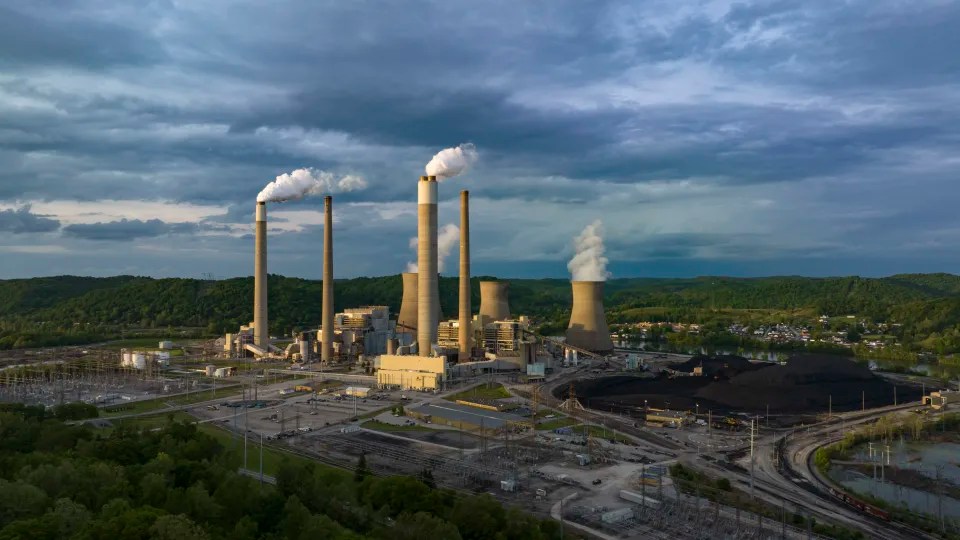(CNN) — The United States and China agreed to relaunch a working group on climate cooperation and pledged to boost renewable energy, the two sides announced Wednesday ahead of a leaders’ summit in San Francisco, as the world’s two biggest polluters struggle to address their geopolitical tensions. Climate crisis.
The announcement came hours before US President Joe Biden and Chinese President Xi Jinping sat on the sidelines of the Asia-Pacific Economic Cooperation summit for their first conversation in a year, a long-awaited meeting aimed at stabilizing volatile ties.
Cooperation on climate change has long been seen as a rare bright spot in a rocky relationship between the United States and China that has been strained over trade, technology, human rights and geopolitics. But even that bright spot dimmed last year when Beijing broke off climate talks with Washington in retaliation for a high-profile US visit to Taiwan last summer.
Wednesday’s report, released separately US Department of State. And this Ministry of Environment and Environment of China, came after days of meetings between US climate envoy John Kerry and his Chinese counterpart Xie Zhenhua at the Sunnylands Retreat in California earlier this month. The two ambassadors met in Beijing this summer.
The statement said the two sides decided to “activate” a suspended bilateral working group to “engage in dialogue and cooperation to adopt concrete climate action” this decade. That task force was there proposed Kerry and Xi were originally due to attend a United Nations climate summit in Glasgow in 2021, but that has been put on hold since August last year.
The announcement promises a significant increase in renewable energy such as wind, solar and battery storage to manage each country’s largest energy sector, particularly replacing fossil fuels such as coal, oil and gas.
China and the US have committed to “adequately accelerate the use of renewable energy” in their economies by the end of 2030 to accelerate the “replacement of coal, oil and gas”. They also pledged to support efforts to “triple global renewable energy capacity by 2030.”
In international climate commitments by 2035, both countries have agreed to cut all greenhouse gases across the economy, including carbon dioxide, methane and hydrofluorocarbons. The agreement includes efforts to limit emissions to a target of 1.5 degrees Celsius of global warming, which scientists say will make the effects of climate change, such as heat waves and droughts, harder on humans and ecosystems as a whole. According to
China has for the first time officially announced its intention to curb all greenhouse gas emissions, not just carbon dioxide emissions, as outlined in its current climate targets, a Chinese climate expert in Beijing said. He was not authorized to speak to the media.
Methane, in particular, is a greenhouse gas that scientists have identified as one of the reduction targets in recent years because its warming potential is about 80 times more potent than that of carbon dioxide in the short term. Last week, China presented a plan to reduce For its methane emissions, experts have criticized it as weak and lacking concrete targets.
“In the current political environment, both sides have tried their best to find some practical and feasible points to move forward. This is very practical,” the Beijing climate expert said.
Li Shuo, director of the Asia Society Policy Institute’s China Climate Center, said China’s commitment to setting emission targets for all greenhouse gas emissions was undoubtedly the most significant point of the declaration.
“Carbon dioxide is one of the greenhouse gases. Non-carbon dioxide gases such as methane play a significant role in China’s greenhouse gas emissions,” he said.
“If you don’t include them, you really don’t include a significant portion of all the nation’s emissions.”
China previously pledged to peak emissions “before 2030,” but did not specify exactly when it would do so. However, there are signs that the rapid expansion of wind and solar power in the country will begin to displace coal. According to a Carbon Brief analysis published this week, China’s emissions could begin to decline next year, heralding a more widespread downward shift.
However, despite promises of a significant increase in renewable energy, China has said nothing overtly about whether it will phase out or phase out the use of coal, the most polluting fossil fuel.
The Sunnylands report comes three weeks ahead of this year’s annual UN climate conference, COP28, in Dubai. Other countries often look for signs of cooperation between the world’s two biggest emitters, which will set the tone and pace of the annual conference.
Li, at the Asia Society, said the Sunnylands report was a “timely US-China alignment effort” ahead of COP28, as their commitment was “a prerequisite for meaningful global progress”.
However, he said the difficult relationship between the US and China meant that a climate deal would only serve to “set the groundwork” and not “set the tone”, adding that there was much work ahead of COP 28.
“The US-China talks will help stabilize politics when the countries meet in the UAE, but important issues like phasing out fossil fuels still need a lot of political effort. China should also consider what other ambitions it can bring. Stopping approvals for new coal-fired power plant projects is a good next step. step by step,” he added.





